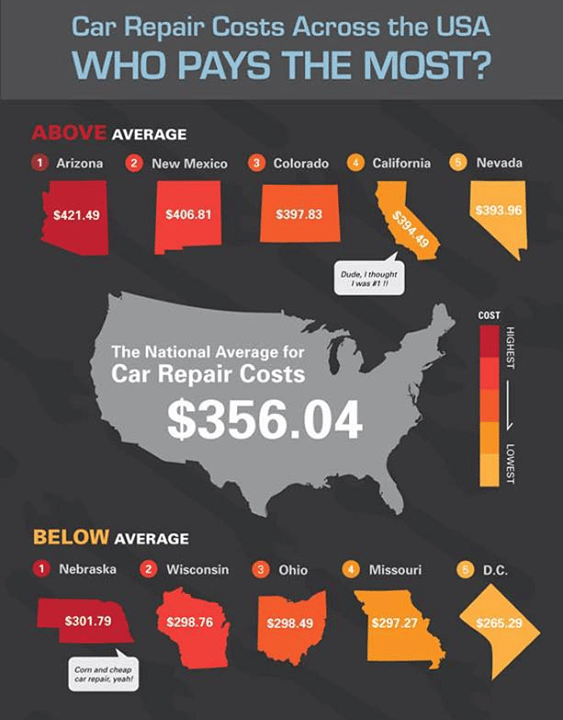Analyzing Your Cars And Truck'S Warning Indicators: What They Actually Convey
Analyzing Your Cars And Truck'S Warning Indicators: What They Actually Convey
Blog Article
Short Article Produced By-Faulkner Gilbert
When you're behind the wheel, those beautiful warning lights on your control panel can be a little bit puzzling. Do you understand what they're attempting to inform you regarding your cars and truck's wellness? Comprehending https://bestoilchangenearme62840.mybuzzblog.com/10832498/find-out-exactly-how-to-successfully-select-the-right-car-repair-shop-with-these-ten-expert-suggestions of these lights is vital for your safety and security and the longevity of your vehicle. So, https://www.abc10.com/article/news/local/fair-oaks-carmichael/auto-shop-carmichael-joyrides-customers-cars/103-d465c013-44f8-4e24-b2af-7db5919bbae9 of those lights turns up, wouldn't you intend to decipher its message properly and take the needed actions to resolve it?
Common Warning Lights and Interpretations
Identify common warning lights in your vehicle and comprehend their meanings to make certain safe driving.
The most common warning lights include the check engine light, which signals problems with the engine or discharges system. If this light comes on, it's important to have your vehicle inspected promptly.
The oil stress alerting light shows reduced oil stress, needing prompt attention to avoid engine damages.
A blinking battery light could suggest a damaged charging system, possibly leaving you stranded otherwise resolved.
The tire stress surveillance system (TPMS) light alerts you to reduced tire stress, influencing car security and gas efficiency. Neglecting this can lead to dangerous driving conditions.
The abdominal muscle light suggests an issue with the anti-lock stopping system, jeopardizing your ability to quit swiftly in emergency situations.
Finally, the coolant temperature advising light warns of engine getting too hot, which can cause extreme damages if not fixed quickly.
Understanding these usual warning lights will certainly help you attend to issues immediately and maintain risk-free driving conditions.
Importance of Prompt Attention
Comprehending the typical caution lights in your car is just the very first step; the importance of immediately addressing these cautions can not be stressed sufficient to ensure your security when traveling.
When https://juliusjezuo.blogitright.com/31323058/prepare-for-a-comprehensive-review-of-the-elite-auto-fixing-services-that-will-certainly-redefine-your-automobile-upkeep-regular brightens on your control panel, it's your car's way of connecting a potential issue that requires attention. Overlooking these cautions can cause more severe issues in the future, compromising your security and possibly costing you much more in repairs.
Trigger focus to warning lights can stop break downs and mishaps. As an example, a flashing check engine light could show a misfire that, if left unattended, might trigger damage to the catalytic converter. Resolving this quickly can conserve you from an expensive repair service.
Similarly, a brake system alerting light may indicate reduced brake liquid or used brake pads, critical parts for your safety and security when driving.
DIY Troubleshooting Tips
If you see a caution light on your control panel, there are a couple of do it yourself troubleshooting ideas you can try before seeking specialist help.
The very first step is to consult your auto's handbook to understand what the particular warning light suggests. Occasionally the problem can be as easy as a loose gas cap setting off the check engine light. Tightening the gas cap may solve the issue.
An additional typical problem is a reduced battery, which can cause different advising lights. Inspecting the battery links for corrosion and ensuring they're safe and secure could take care of the issue.
If a caution light lingers, you can try resetting it by detaching the vehicle's battery for a few mins and after that reconnecting it. Additionally, inspecting your lorry's fluid degrees, such as oil, coolant, and brake fluid, can help repair cautioning lights related to these systems.
Conclusion
To conclude, understanding your cars and truck's caution lights is crucial for keeping your lorry running smoothly and safely. By without delay addressing these alerts and knowing what they mean, you can avoid pricey repairs and potential failures.
Bear in mind to consult your cars and truck's handbook for certain information on each advising light and act appropriately to make sure a hassle-free driving experience.
Keep educated, stay safe when traveling!
